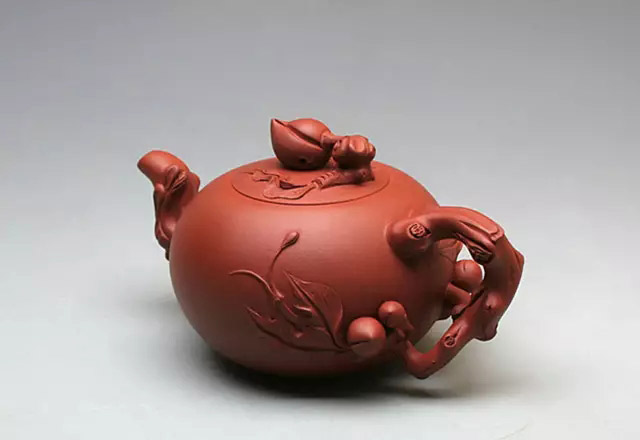The image is from 茶悦网.
Once there was a man received a precious purple clay teapot. He placed it at the head of his bed every night so no one could steal it away from him.
However one night he accidentally knocked the lid off the teapot in his sleep. After waking up to the noise, he decided to get rid of the teapot: after all, what’s the point of keeping a teapot with a broken lid?
So, he grabbed the teapot and threw it out of the window.
The following morning, he found, on the contrary to what he had expected: the teapot lid stayed intact as it landed on his cotton shoes.
Exasperated and frustrated, the man stepped on the lid, crushing it to pieces.
As he stepped outdoors, he encountered another surprise: the teapot he had thrown out of the window the day before hung perfectly intact in a tree outside his window.

The image is from Brainy Quote.
Have you ever had the moment when you wish you could take back the hurtful things said to a loved one? Unlike the teapot that stayed intact, a lot of hurts cannot be undone: it is perfectly human to feel exasperated or disappointed. However it is the actions upon those emotions that make all the difference: had the man decided not to throw out the teapot when exasperated, things would have been a lot different. Therefore, patience is no longer just a virtue, but also a state of mindfulness of the potential consequences of one’s actions.
It did feel like a practical joke however, when our protagonist found that he had thrown out the teapot when the lid was found intact, that there was no going back: he had crushed his own chances: In fact, luck had always been on his side: fate did not ruin his lid, he was the one who did.
Isn’t it ironic that it has never crossed our minds that it is ourselves who created our “bad luck” when hope and light have always proven to be on our side?
Note:
Archaeological excavations reveal that as early as the Song dynasty (10th century) potters near Yixing were using local “zisha” (紫砂 or 紫泥 ; literally, “purple sand/clay”) to make utensils that may have functioned as teapots. According to the Ming dynasty author Zhou Gaoqi, during the reign of the Zhengde Emperor, a monk from Jinsha Temple (Golden Sand Temple) in Yixing handcrafted a fine quality teapot from local clay. Such teapots soon became popular with the scholarly class, and the fame of Yixing teapots began to spread.
https://en.wikipedia.org/wiki/Yixing_clay_teapot




